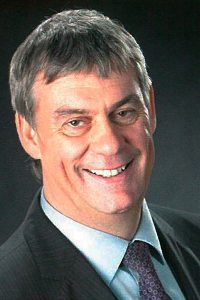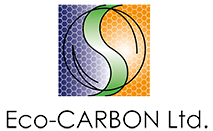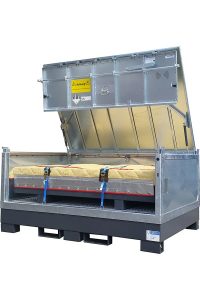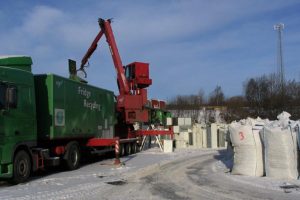This Not Only Harmful But Also Valuable WEEE…
 It is always quite thrilling for an average person to hear an expert talking about his lifetime project, and for those people, who are carrying out similar business, these conversations might be very inspiring, as they can draw valuable insights from them. Recently, we have had such an interview with Dr. Haefeli, Senior Consultant of Federal Office for the Environment in Switzerland, vice president of Western Switzerland Cleantech Cluster, founder and president of the EWEEES Congress www.EWEEES.ru.
It is always quite thrilling for an average person to hear an expert talking about his lifetime project, and for those people, who are carrying out similar business, these conversations might be very inspiring, as they can draw valuable insights from them. Recently, we have had such an interview with Dr. Haefeli, Senior Consultant of Federal Office for the Environment in Switzerland, vice president of Western Switzerland Cleantech Cluster, founder and president of the EWEEES Congress www.EWEEES.ru.
— Dear Mr. Haefeli, not long time ago you have held the Eurasian Waste Electrical Electronic Equipment Solutions Congress (WEEE). How was it?
— It was very well! In March 2018, together with the web portal RUSLOM.com and Moscow International Recycling Expo, MIR, we have held the 3rd Eurasian WEEE Solutions Congress (EWEEES).
The number of its participants, among which were not only Russian companies, but also organizations from CIS states, Japan, European Union and Switzerland, exceeded 850 people. Moreover, these were government officials, associations and companies’ representatives, specializing in logistics and recycling, machine manufacturing companies and Non-Governmental Organizations. Panel discussion, dedicated to the most relevant issues, including problems with collecting waste electrical and electronic equipment (WEEE) in Russian Federation. We were pleased to receive a very positive feedback from the Congress participants and decided to hold it again next year.
— You have also carried out training in WEEE management. How did it go? What do you think about the Russian audience?
— The Eurasian WEEE Solutions Platform supports training of specialists in the field of recycling in word and deed. It is impossible to get experts, ready to improve themselves in managing of the whole process chain, starting from the collection and recycling of WEEE and accomplishing by the secondary raw material market development, without any special training. Together with National University of Science and Technology and the web portal RUSLOM.com, we conducted a one-day advanced training course for interested professionals. I am convinced that training of people is the key element of an effective using of the resources. The Congress participants were very competent and posed many important questions.
— Which topics during the EWEEES Congress received special attention?
— The main topic of the Congress was WEEE collection. Experience has shown that there is no way to arrange recycling and discharging of landfills without collection of waste. The system of economic turnover in the field of waste handling cannot be created as well. The most important issues were:
- Who is responsible and who puts up money for collection and treatment of WEEE;
- What laws and regulations of the Russian Federation control the implementation and hold the check of the WEEE collection process;
- How large should the proportion of collected and recycled waste be in relation to the quantity of products sold?
There was also a detailed discussion about the standards in the field of WEEE treatment, which included the content of EU/Switzerland standards, the level of the technological process, necessary to meet these requirements, ways to monitor their implementation on the ground of the European practice.
— There is a new term for Russia called urban mining. What does it mean?
— Waste products is the source of energy and secondary material resources. They should be returned to the economic turnover; that is the process called “urban mining”. Every year my colleagues from the globally known United Nation University selectively evaluate the flows of consumption products, using national sales statistics and average product useful life.
In such a way, they can determine with quite a high accuracy the quantity of products turned into waste. Table 1 shows the data on the number of WEEE in different categories. In total, over 1.8 million tons of WEEE is produced annually, which corresponds in volume to the four pyramids of Cheops.
|
Country |
Heat-exchange equipment | Monitors | Lamps | Large electronics | Small electronics |
Small IT equipment |
|
Russian Federation |
237 | 206 | 22 | 283 | 523 | 121 |
|
Belarus |
41 | 36 | 3,8 | 49 | 90 |
21 |
|
Kazakhstan |
25 | 22 | 2,3 | 30 | 55 |
13 |
|
Armenia |
2,4 | 2,1 | 0,2 | 2,8 | 5,2 |
1,2 |
|
Georgia |
3,6 | 3,1 | 0,3 | 4,3 | 8,0 |
1,9 |
|
Kyrgystan |
1,2 | 1,1 | 0,1 | 1,5 | 2,7 |
0,6 |
|
Azerbajian |
11 | 9,3 | 1,0 | 13 | 24 |
5,5 |
Table 1. The number of WEEE (different categories) generated in different countries in 2016, thousand tons
— And what does this correspond to in terms of resources? In particular, for the Russian Federation?
— Assuming that the Russian Federation accounts for about 17% of the WEEE volume of European countries, it is possible to get a very realistic estimate of the amount of waste generated in Russia. Table 2 shows the data on batteries and e-waste.
| Products and materials | Sales volume for 2016, tons | Goods in circulations, tons | Generated waste, tons |
| Batteries | 0,46 mln | 1,5 mln | 0,44 mln |
| Batteries individual elements | |||
| Cobalt | 600 | 1800 | 540 |
| Lithium | 360 | 1080 | 144 |
| Маnganese | 6,3 | 18,9 | 6,2 |
| Electronic devices | 2 mln | 20 mln | 2 mln |
| Electronic components | |||
| Plastic | 500 | 5000 | 500 |
| Copper | 45 | 450 | 45 |
| Gold | 4,6 | 46 | 4,6 |
| Neodymium | 210 | 2100 | 210 |
| Indium | 5 | 50 | 5 |
| Silver | 22 | 220 | 22 |
| Ferrous metals | 960 | 9600 | 960 |
Table 2. Data on waste batteries and electronic devices, as well as the substances contained in them for 2016 in the Russian Federation
— Batteries are the most hazardous of WEEE, isn’t it?
— Currently, batteries contain almost no mercury, which greatly simplifies their disposal. At the same time, they are a very valuable resource. Every year in Moscow and the Moscow region about 4 thousand tons of weee batteries become a source of waste. At that rate, it is quite efficient to invest in recycling equipment. Lithium batteries is a story of its own, as under any physical impact they can trigger inflammation, including landfills where they are usually stored.
— Are there any EU or Switzerland directives regulating the transportation of lithium batteries?
— Yes, there are clear regulations regarding their storage, transportation and disposal. Batteries are hazardous products, which should be transported in a safe manner, because if handled incorrectly, they can cause a fire. Photo 1 shows as an example one of the containers for storage and transportation of batteries. The design of it meet the requirements of the European Agreement concerning the International Carriage of Dangerous Goods by Road (Europauishe Gefahrengutverordnung ADR). In additions, many insurance contracts also prescribe the use of such containers.
— Is the danger of fire really so great?
— With the expansion of production and use of electric vehicles, this danger of fire will catch up with us much faster than we even can think. Regarding the benefits of recycling batteries, you can extract iron, manganese, zinc, cobalt and lithium from them. In general, all WEEE enable most of valuable materials to be recycled: when processing white goods, this is mainly iron; telecommunications equipment, such as computers, file servers and smartphones mainly contain precious metals, like gold, palladium, silver, and platinum; copper is mainly included in cables and all other devices associated with the transmission of electricity.
— And what comes in terms of money?
— That issue essentially depends on the market situation, more specifically on the trading rates of international trading exchanges on metals and regional movement of securities. Nevertheless, I believe that each of the WEEE groups, including batteries, in the consumer market is rated at 500 million euros. The estimated cost of materials contained in electrical and electronic equipment that is in use is approximately 6 trillion euros.
— The numbers are quite impressive. After all, the recycling process is very difficult, right?
— In case of WEEE, we are talking about multicomponent materials: valuable materials are integrated into the product and sometimes it is not easy to separate them out. At the same time, the concentration of valuable materials in electronic waste is often significantly higher than in ore. Consequently, it is much easier and more profitable to obtain them by e-waste recycling than from minerals.
— And how this can be done based on the best available technologies?
— An efficient and environmentally friendly WEEE processing technology includes five basic stages:
- removal and proper disposal of harmful components (condensers, batteries) and substances (mercuric, polychlorinated biphenyls, brominated flame retardants, hydrochlorofluorocarbons);
- mechanical material crushing;
- fraction production of the optimum size;
- sorting: increasing the concentration of valuable substances and improving the fractions;
- realization of fractions.
If there is a small amount of waste, these processes can be performed manually without significant investments. If it is necessary to process large volume of waste annually, then from an economic and ecological point of view it is more efficient to invest in industrial equipment. The process can be performed gradually using a modular principle. Industrial plants are capable of processing 3-10 tons of WEEE per hour and can be operated up to 7000 h/year.
— How easy is it to choose the right technology and equipment?
— That is not easy at all. I have been personally estimating, buying, installing and commissioning this equipment for more than 20 years. Very often, the suppliers could not fulfill their promises.
As a buyer, I had to learn very quickly in order to control the situation. The problem is that all the machine builders are trying to sell a finished industrial plant. In the future, you will be left alone with this equipment; and without any assistance, you need to understand how to use it efficiently.
It is quite possible to master the knowledge of the operator or bring in a specialist who is able to evaluate industry-proven technologies and reliable suppliers. I always advise people to invest in reliable, proven technology, while taking into account the total costs and service life of the equipment. Taking into account the volume of investments, depreciation charges for the equipment, annual production costs and divide by five years, you will find out the following: the prices of relatively cheap equipment manufacturers reach the level of so-called expensive ones, but the latter give a much better result.
It is also important to receive good conditions for return on investment and high pure discounted income. To that end, it will be possible to estimate the level of investments profitability. Additional noteworthy issues are fastest possible commissioning and optimum work load of the equipment. The higher the plants’ performance and the coefficient of its use, the higher profitability.
Usually it takes more than two years for the company to achieve optimal operating conditions. Nevertheless, with the professional approach it is possible to reduce this period and to implement a fast learning curve in terms of equipment operation and profitability of the production.
— You have been talking about removal of harmful substances. In Russia, situation with collection and processing of mercury lamps is relatively good, but the other substances mentioned, where they can be found and why they are harmful?
— Polychlorinated biphenyl is a poison that has been banned since 1986; but it still can be found in condensers, transformer fluids, and old pigments. It can penetrate through the skin or mucous membrane into the blood and start destroying the inward parts of the body, in particular, the liver. That is why the condensers, especially the large ones, should be recycled separately.
Antipyrene might be a part of polymer materials, especially in the content of printed circuit boards. As a rule, these are organic compounds of bromine, which are poisonous.
Hydrochlorofluorocarbons are used in refrigerators compressors, freezers and air conditioners. Moreover, they were used for foaming polyurethane used in insulation of refrigeration devices, currently have a destructive effect on the ozone layer, and are a powerful factor in the greenhouse effect. One refrigerator containing this substance causes the same damage to the planet’s ecosystem as emission of 2.8 tons of carbon dioxide. This amount of CO2 will be able to absorb 112 birches per year. In Moscow and the Moscow region, about 600 thousand refrigerators annually fall out of use; are there 30 million extra birch trees in the region?
That is why the correct processing of refrigeration devices is very important. Moscow and the Moscow region are very suitable regions in order to take the first step in this direction: there is a large number of old refrigerators and a well-developed logistics. In addition, it would reduce the load on landfills.
— Why this is not done, what do you think?
— The answer is simple. The price for recycling of one refrigerator with the use of solutions corresponding to the modern level of technical progress is higher than the income that can be obtained from the sale of valuable materials. Except that, hydrochlorofluorocarbons should be destroyed by means of thermal or chemical treatment, this creates additional costs. Meanwhile, these substances do not have any flavor and for this reason do not cause indignation of the population. In order to organize the recycling of refrigeration devices, additional investments are required, not to mention effective regulation by the state.
— I assume collecting of this type of waste is difficult in addition…How can we bring such an amount of waste to one place?
— A good solution is to use a mobile industrial recycling plant (photo 2), which can move from one collection point to another and recycle the cooling devices accumulated on them. The time will come when the industry producing and importing refrigeration equipment will become aware of its responsibility and will start collecting and recycling of refrigeration equipment.
— This was the third Congress in Moscow. Do you see any progress in the area of WEEE handling in Russia?
— Yes, I see them. A lot of companies, universities and private actors are becoming more and more interested in the problems of collecting, transporting and recycling of WEEE.
It is very important that the government, society and business are working cooperatively and start transferring the problems of WEEE recycling into the area of technical solutions.
I am very happy to place a record on such positive changes in this direction.
In order to support this important process in Russia with our knowledge and experience, we, together with various universities and web portal RUSLOM.com, are engaged in the training of specialists hold congresses. Our goal is to unite unindifferent people, their knowledge and ideas, and then, on this basis, develop effective industrial technical solutions for the collection and processing of WEEE.
We will be very pleased to hold the 4th Eurasian WEEE Solutions Congress in March of 2019 in Moscow and a practical workshop on waste electronics and electrical equipment. Moreover, the magazine “TBO” (MSW) continues to be our general partner and we are happy to continue our cooperation.
— Thank you, we are also glad to cooperate and wish you success!
Interviewed by O.V. Sheveleva



